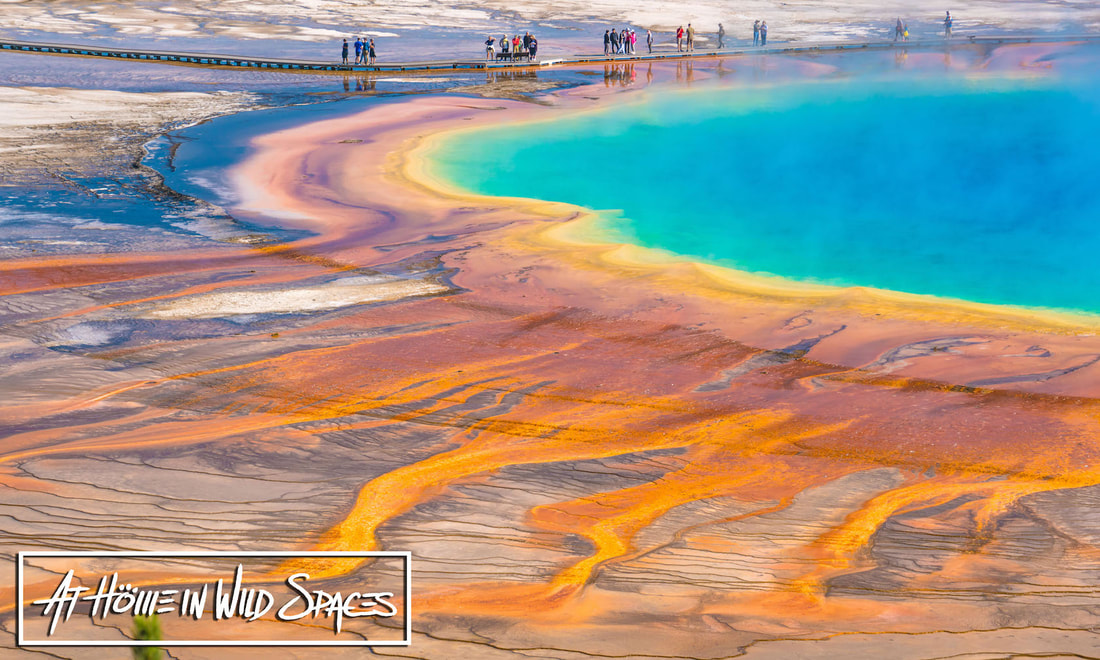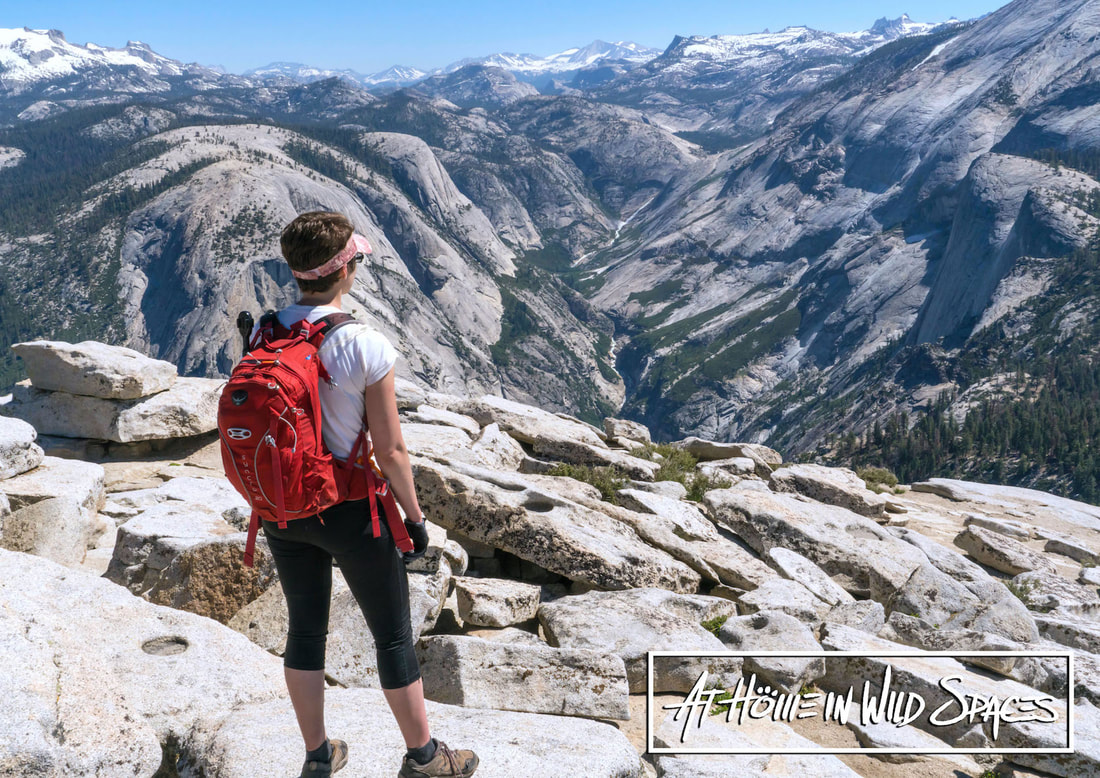|
Two weeks ago, Danielle Burnett became the third person in nine years and the second since May 2018 to fall to her death while on Half Dome's precipitous cables. Yosemite alone averages close to 17 deaths a year, and the U.S. park system as a whole averages six deaths a week. What's causing these deaths, and what is there to learn from tragedies like the one that claimed Danielle's life? Some in the outdoor community may see Danielle's fate among others as the result of careless behavior, broadly classifying victims as reckless selfie-takers or inexperienced couch potatoes who got overly excited after learning about Half Dome on social media. But, if we think all accidents are the result of social media fads, or inexperienced wannabes attempting things they shouldn't be — we're dead wrong. Clearly, there are more than a few cases where painfully irresponsible behavior has led to death, injury and damage to natural resources. Whether taking selfies near a cliff's edge in Yosemite National Park, crowding bison in Yellowstone, or YouTubers who made international headlines in 2016 by damaging Yellowstone's wondrous Grand Prismatic Spring then achieving double infamy in 2018 when three of their members were killed after swimming in a treacherous pool above Shannon Falls in British Columbia. Clearly, far too many travelers are using poor judgment and taking foolish risks. But more often then you would think, victims are not novices exploring the outdoors on an internet-inspired whim. Rather, they're often well-traveled explorers who despite their experience, are getting into trouble. How then do we make sense of so many veteran hikers getting into trouble? What is there to learn, or relearn following tragedy? Lesson #1 - Nature Sets the RulesThe first and frequently discarded lesson is that Mother Nature sets and enforces the rules; we abide by them. If these terms are not acceptable to you, please — stay home. Though not always the case, she can punish foolishness, complacency, and disrespect harshly. Remain mindful of potential hazards, and don't tempt nature to remind you who is in charge regardless of your experience level. In many cases, missteps don't allow for do-overs. While nature can seem unforgiving, she's also more than happy to reward preparation and humility. Do everything you can to remain in this second group. Lesson #2 - You are responsible for your own safetyIt never fails, after each tragedy, some people begin to question, "Why are people allowed to hike this trail?" Others declare, "There should be railings." and on and on. If you ask me, there are already far too many railings. Land managers work constantly to warn the public about potential hazards or destructive practices and even at times provide barriers. But you and you alone are responsible for your safety. Spending time outdoors brings with it certain hazards, as does driving on the road. Statistically speaking Yosemite's roads are far more dangerous then Half Dome's cables. Should we close the roads? No, that would be ludicrous. Instead, we take reasonable steps to mitigate dangers the same as we do on roadways. We wear seatbelts, remain attentive and courteous, and we alter itineraries if necessary. As for railings: they have their place. But to place railings along every inch of Yosemite's rim or wherever a fall is possible, would in my view be criminal. I've never encountered a railing that didn't detract from the scenic beauty and natural character of a wild landscape. Every reasonable effort should be made to keep people safe, but railings can't replace personal responsibility. Situational awareness, preparation, and good judgment are infinitely more effective than railings. We've already changed and in many ways tarnished these priceless islands of natural wonder and beauty. It's time we calibrate our behavior, prioritizing preservation over alteration. Make use of the resources provided by the National Park Service, Forest Service, BLM, State, municipal, and private land managers. Lesson #3 - Monkey See, Monkey... If you spend much time outdoors, you've seen this tiresome, frequently destructive, and often dangerous scene play out again and again, and again. One person does something, and others quickly follow suit. The internet age has exasperated the problem, with hordes of people desperate to achieve internet fame or simply replicate something they saw online, even if it's illegal and/or dangerous. Whether rope swings from arches, dramatic selfies on Instagram, or watching someone take unnecessary risks in person — don't participate in reckless or destructive behavior, even if other people are doing it. Exploring the outdoors packs more than enough thrills without requiring foolishness or cheap sensationalism. Unfollow or unsubscribe to individuals or content creators that subsist on sensationalism and hazardous, irresponsible stunts. If necessary, report them to the proper authorities. It's not just their life, others are almost guaranteed to follow. Lesson #4 - Survival is Not Proof of CompentencyFrom all accounts, Danielle was a seasoned and competent hiker, as were a number of those who have met a similar fate on Half Dome. All the factors that lead to tragedy in the backcountry are not always known or understood. There is a natural temptation to speculate and fill the blanks. Inventing a narrative that suits our world view might satisfy our desire for answers, but more often than not — we're fooling ourselves. According to one account, not even people who witnessed Danielle's final moments know exactly what led to her fall. Those of us who weren't present would be wise to suppress the impulse to speculate. Instead, we should reflect on how even the most experienced of us needs to prepare and remain attentive. Last October, I was exploring the Wasatch Mountains when the weather turned and I decided to call it for the day. While taking some quick photos I spotted a helicopter hovering within feet of sheer cliffs in a snow storm. It was clear authorities were searching for someone. A seasoned hiker and traveler had vanished a month earlier while hiking one of his regular trails. I was there when they found his body. Not everyone who pets a bison gets gored. Not everyone who puts themselves or others in danger for an ill-conceived selfie gets killed, not everyone who hikes Half Dome's cables in a rainstorm falls to their death, nor do competent or experienced hikers always make it home. Following Danielle's accident, I was fortunate to discussed visitor safety with Scott Gediman, Chief Public Affairs Officer for Yosemite National Park. While he couldn't discuss the details surrounding Danielle's specific case, we did discuss safety concerns and the Park Service's efforts to help visitors prepare and have a safe and enjoyable trip. Entering restricted or hazardous areas and taking risky selfies have clearly been responsible for a number of tragedies, but Ranger Gediman added that "Between 4-4.5 million people visit Yosemite National Park every year, and the huge majority have a wonderful visit. However, there are occurrences when people are doing all the right things and something happens." Adding, "You're entering a wild place, that's why we are so dedicated to providing safety information and helping visitors get the tools they need." Lesson #5 - Summit Fever KillsSome have suggested that the introduction of the permit system in 2010 may have made Half Dome more dangerous, concluding that hikers might see their allotted day as their "one chance" to reach the summit. Summit Fever or the intense drive to reach your destination is nothing new. All hikers and climbers need to stay mindful of its pull. Permits, time, effort, expense or the chance to add a checkmark to your bucket-list should NEVER dictate your decisions in the backcountry. Weather and other environmental factors, your fitness (including mental and emotional condition), preparation, the condition of your gear and backcountry ethics are the only factors that should influence your decisions. Don't let Summit Fever and gambling psychology enter your decision making. The trail to Half Dome's summit is a positively stunning hike and one of our favorites. Thanks to the cable route, you don't have to be an expert rock climber to experience the sprawling view from the summit. But do not take this trail for granted. Even seasoned hikers need to prepare and watch their step. That being said, the cables have not proven to be especially deadly. While absolutely tragic, three deaths in nine years are not many. Other trails including Half Dome's less famous first half, The Mist Trail have proven to be significantly deadlier. Where ever you travel, you are your own best guarantee. There's no substitute for situational awareness or good sense. Use the resources provided by park managers and read our comprehensive guide to Half Dome and consider the lessons listed here. More from athomeinwildspaces.com
1 Comment
9/20/2019 12:46:15 pm
I learned Danielle was with a group that had went ahead of her and her son. It had started sprinkling, and she stopped for safety reasons. Somewhere between then and when she fell, she was not clipped to the cables. However, she had been using them prior to the accident. She slipped, and went under the cables. Another hiker laid down on their stomach and tried to reach her, but could not. Unfortunately, her son watched as she fell to her death. So sad.
Reply
Your comment will be posted after it is approved.
Leave a Reply. |
Wild Spaces
|




 RSS Feed
RSS Feed
